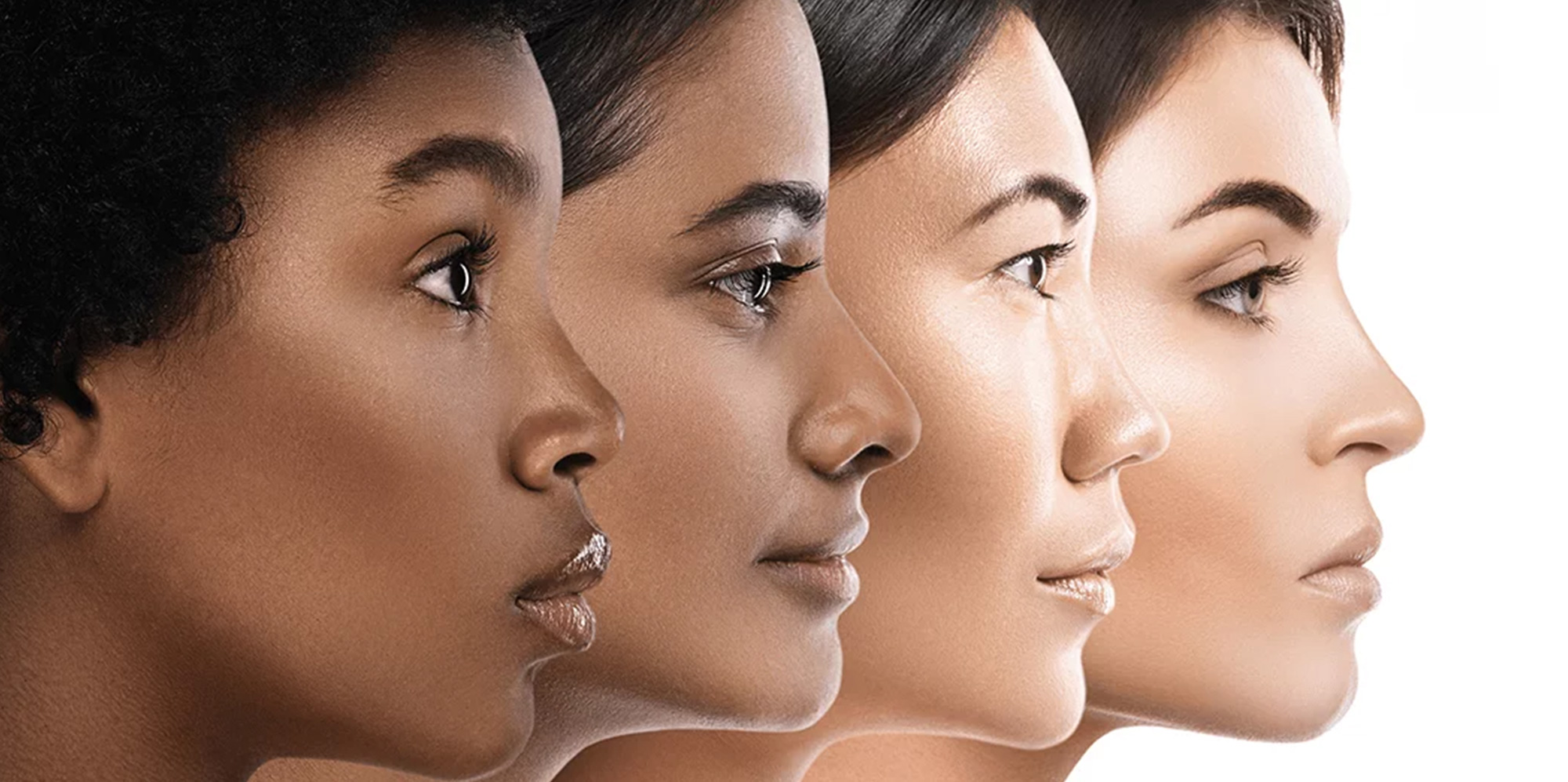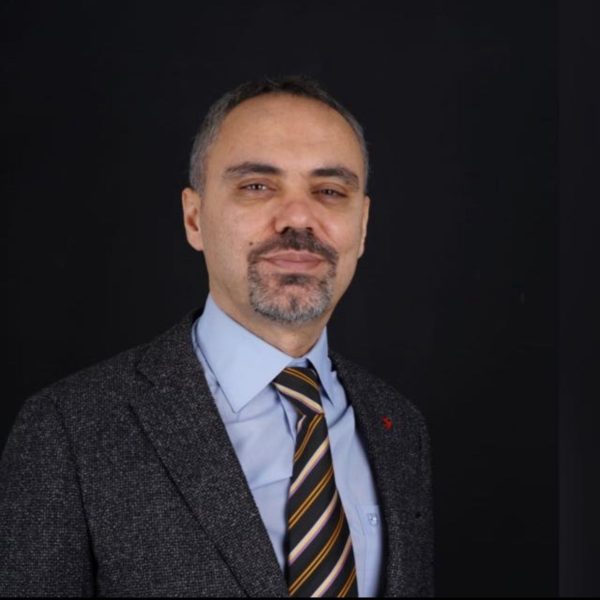What is Ethnic Rhinoplasty?

Ethnic rhinoplasty is a specialized branch of rhinoplasty that acknowledges and respects the unique nasal features and aesthetic ideals associated with various ethnicities. Unlike traditional rhinoplasty, which may have adhered to Eurocentric beauty standards, ethnic rhinoplasty is tailored to preserve and enhance the individual’s ethnic identity while addressing cosmetic or functional concerns.
Key Principles:
1. Cultural Sensitivity: Ethnic rhinoplasty recognizes the importance of cultural identity and the significance of diverse nasal aesthetics across different ethnic groups. Surgeons approach each procedure with an understanding of the patient’s cultural background and aesthetic preferences.
2. Harmonizing Features: Rather than pursuing a one-size-fits-all approach, ethnic rhinoplasty seeks to achieve harmony between the nasal structure and the overall facial features, taking into account the unique characteristics of each ethnicity.
3. Preserving Ethnic Identity: The goal is not to conform to a singular standard of beauty but to create results that complement and enhance the patient’s natural appearance, preserving the ethnic traits that contribute to their individual identity.
Considerations in Ethnic Rhinoplasty:
1. Variations in Nasal Anatomy: Different ethnicities exhibit distinct nasal characteristics, such as nasal bridge height, tip shape, and nostril width. Surgeons in ethnic rhinoplasty carefully assess and understand these variations to tailor the procedure accordingly.
2. Cultural Aesthetics: Beauty ideals vary among cultures. Ethnic rhinoplasty surgeons work closely with patients to understand their cultural preferences and aesthetic goals, ensuring that the outcomes align with the patient’s vision.
Common Procedures in Ethnic Rhinoplasty:
1. Nasal Bridge Augmentation or Reduction: Depending on the individual’s ethnic background, surgeons may perform procedures to enhance or reduce the nasal bridge, ensuring it complements the overall facial features.
2. Tip Refinement: Ethnic rhinoplasty often involves addressing the nasal tip to achieve symmetry and balance while respecting the patient’s ethnic characteristics.
3. Nostril Reshaping: Some procedures may focus on adjusting the width or shape of the nostrils to create a more harmonious appearance.
Conclusion:
Ethnic rhinoplasty is a celebration of diversity, allowing individuals to enhance their nasal aesthetics while embracing and preserving their unique cultural identity. Patients considering ethnic rhinoplasty are encouraged to consult with experienced surgeons who understand the intricacies of diverse nasal anatomy and cultural aesthetics.
This approach to rhinoplasty not only promotes personalized and culturally sensitive care but also contributes to a more inclusive understanding of beauty in the field of aesthetic surgery.
The use of cartilage in ethnic nose surgery, like in any rhinoplasty procedure, depends on the specific goals of the surgery and the individual characteristics of the patient’s nose. Cartilage grafts are commonly utilized in rhinoplasty to provide structural support, enhance definition, and achieve a balanced aesthetic outcome. Here are some considerations regarding the use of cartilage in ethnic nose surgery:
Is cartilage required in ethnic nose surgery?
1. Cartilage for Structural Support:
- In many cases, cartilage grafts are used to provide structural support to the nose.
- This support can be important for reshaping the nasal tip, addressing nasal bridge issues, or ensuring overall stability.
2. Tip Refinement:
- Cartilage grafts may be employed to refine and enhance the nasal tip, particularly in cases where additional projection, definition, or symmetry is desired.
3. Dorsal Augmentation or Reduction:
- Cartilage grafts can be used for dorsal augmentation (building up the nasal bridge) or reduction (decreasing the prominence of the nasal bridge) based on the patient’s aesthetic goals.
4. Ethnic Variations:
- The use of cartilage may vary depending on the ethnic background and specific characteristics of the patient’s nose.
- Surgeons specializing in ethnic rhinoplasty take into consideration the unique features associated with different ethnicities.
5. Alternative Materials:
- In some cases, synthetic materials or donated cartilage (allograft) may be used as alternatives to the patient’s own cartilage.
6. Autologous Cartilage:
- When cartilage is needed, it is often preferable to use the patient’s own cartilage (autologous) to minimize the risk of rejection or complications.
7. Patient’s Anatomy and Goals:
- The decision to use cartilage in ethnic nose surgery is highly individualized and depends on the patient’s anatomy, goals, and the surgeon’s assessment of what is necessary to achieve the desired outcome.
It’s important for individuals considering ethnic nose surgery to have a thorough consultation with a qualified and experienced plastic surgeon. During the consultation, the surgeon will assess the patient’s nasal anatomy, discuss aesthetic goals, and determine the most appropriate surgical approach, including the potential use of cartilage grafts if needed.
FAQ
An Indian or Pakistani rhinoplasty is designed to address the unique features of these ethnic noses while preserving the patient’s cultural identity. The primary goal of this type of nose job is to enhance the individual’s facial features in a way that is natural and harmonious with the rest of the face. Some key objectives of an Indian or Pakistani rhinoplasty include:
Reducing the high nose bridge: By lowering the high nasal bridge, a more balanced and aesthetically pleasing profile can be achieved.
Narrowing the broad nasal width: Adjusting the width of the nose can create a more refined and proportional appearance, enhancing the overall facial harmony.
Smoothing the nasal bump or hump: Addressing the prominence of the nasal hump can result in a smoother and more streamlined nasal profile.
Lifting and refining the drooping nose tip: By elevating and adding definition to the drooping nose tip, a more balanced and attractive nose shape can be achieved.
Preserving ethnic identity: It is important to maintain the unique features that define the patient’s ethnic background while making the desired improvements.
To achieve the best results, it is essential to find a skilled and experienced surgeon who understands the distinct characteristics of Indian or Pakistani noses and can perform a rhinoplasty that enhances the patient’s features while preserving their cultural heritage. By choosing a surgeon who specializes in ethnic rhinoplasty, patients can ensure they receive a personalized treatment plan tailored to their specific needs and aesthetic goals.
A Middle Eastern rhinoplasty is a specialized procedure designed to address the distinct characteristics of Middle Eastern noses while maintaining the patient’s ethnic heritage. The primary goal of this type of nose job is to enhance the individual’s features in a way that looks natural and harmonious with the rest of the facial structure. Some key objectives of a Middle Eastern rhinoplasty include:
Reshaping the long droopy nose: By lifting and refining the droopy nose tip, a more balanced and aesthetically pleasing appearance can be achieved.
Smoothing the nasal hump: Reducing the prominence of the nasal hump can create a more harmonious and smoother nasal profile.
Straightening the nose: Addressing any crookedness or deviation in the nose can result in a more symmetrical and aesthetically pleasing appearance.
Improving the projection of the nose tip: By refining the nose tip’s projection, the overall shape and contour of the nose can be enhanced.
Adjusting thick nasal skin: Thinning or sculpting the thick nasal skin can help improve the overall shape and contour of the nose, resulting in a more refined appearance.
Correcting a deviated septum: In cases where there is a deviated septum, the surgeon may perform a septoplasty to correct the issue, improving both the appearance and functionality of the nose.
It is crucial to find a skilled and experienced surgeon who understands the unique characteristics of Middle Eastern noses and can perform a rhinoplasty that enhances the patient’s features while preserving their ethnic identity. By choosing a surgeon who specializes in ethnic rhinoplasty, patients can ensure that they receive a personalized treatment plan tailored to their specific needs and goals.
An African rhinoplasty is a specialized procedure that aims to address the unique features of an African nose while preserving its ethnic identity. This procedure can help patients achieve a more refined and balanced appearance while maintaining their cultural heritage. Some of the key goals of an African rhinoplasty include:
Narrowing the nostrils: By reducing the width of the nostrils, the overall appearance of the nose can be made more proportionate to the patient’s face.
Narrowing the nose bridge: Reshaping the wide and low nasal bridge can result in a more aesthetically pleasing and harmonious look.
Refining the nasal tip: A wide and bulbous nasal tip can be reshaped to create a more defined and elegant appearance.
Reducing fatty tissue: By removing excess fatty tissue within the nose, the overall contour and shape of the nose can be improved.
It is important to note that ethnic African rhinoplasty is a delicate procedure that requires a skilled and experienced surgeon who understands the unique characteristics of African noses. The goal is to enhance the patient’s features while preserving the ethnic identity and ensuring a natural-looking result.
An Asian rhinoplasty is a specialized procedure tailored to address the unique features of Asian noses while preserving their ethnic identity. The primary goal of this procedure is to enhance the patient’s features while maintaining a natural-looking result that complements their facial structure. Some of the key objectives of an Asian rhinoplasty include:
Augmenting the nose bridge: By increasing the height and projection of the low and flat nose bridge, a more balanced and harmonious facial appearance can be achieved.
Refining the nose tip: Reshaping the wide and rounded nose tip can result in a more defined and aesthetically pleasing look.
Reducing the thickness of the nose skin: By addressing the thick skin of the nose, the overall contour and shape can be improved, resulting in a more refined appearance.
Removing excess soft tissue: Eliminating excess soft tissue within the nose can help enhance the overall shape and contour.
Narrowing the nostrils: Resizing the wide nostrils can create a more proportionate and balanced look.
Strengthening the septum and cartilage: By reinforcing the weak septum and cartilage, the structure of the nose can be improved, leading to a more defined and projected appearance.
Cartilage grafting: In some cases, cartilage grafting may be necessary to achieve the desired projection and shape.
The longevity of ethnic rhinoplasty results can vary depending on a variety of factors, including the patient’s age, skin type, and the specific techniques used during the surgery. However, generally speaking, the results of ethnic rhinoplasty can last for many years or even a lifetime.
It’s important to note that while the initial results of the surgery can be seen immediately after the procedure, it can take several months for the final results to fully develop. During this time, the nose will continue to heal and settle into its new shape. Patients will need to be patient and follow their surgeon’s post-operative instructions to ensure proper healing and the best possible outcome.
Additionally, the longevity of the results can be affected by lifestyle factors, such as smoking or exposure to the sun. Therefore, patients should take steps to maintain their overall health and protect their skin from sun damage to help ensure long-lasting results.
Ethnic nose surgery, like any other surgical procedure, can involve some discomfort and pain during the recovery period. However, the level of pain and discomfort varies from person to person and can depend on the extent of the surgery, the patient’s pain threshold, and the surgical technique used.
During the procedure, the patient is typically under general anaesthesia, so they will not experience any pain or discomfort. However, after the surgery, the patient may experience pain, swelling, and bruising around the nose, which can last for several days or weeks.
To manage pain and discomfort, the surgeon will usually prescribe pain medication to help alleviate any discomfort. Patients may also be advised to keep their heads elevated to reduce swelling and use ice packs to alleviate discomfort.
It is important to follow the post-operative instructions provided by the surgeon to ensure proper healing and minimise pain and discomfort. Patients are typically advised to avoid strenuous activities, blowing their nose, and smoking for several weeks after surgery.
It’s worth noting that ethnic nose surgery can be a complex procedure, and it’s important to choose an experienced and qualified surgeon to minimise any risks and complications associated with the surgery. Patients should also have a clear understanding of the potential risks and benefits of the procedure before undergoing surgery.
After an ethnic rhinoplasty, it is generally advised that patients avoid sniffing forcefully through their nose for several weeks to help promote proper healing and to avoid damaging the delicate tissues inside the nose. Sniffing forcefully can create a vacuum effect in the nose, which can interfere with the healing process, cause bleeding, and affect the final result of the surgery.
Instead, patients may be instructed to breathe through their mouth during the first few weeks after surgery and to use a saline nasal spray to help keep the inside of the nose moist and promote healing. Additionally, patients may be advised to avoid blowing their nose for several weeks after surgery, as this can also cause bleeding and interfere with proper healing.
It’s important to follow your surgeon’s post-operative instructions carefully, including any instructions regarding nose blowing or sniffing, to help ensure optimal healing and the best possible outcome. If you have any concerns or questions about your recovery after an ethnic rhinoplasty, it’s important to contact your surgeon for guidance and advice.
The healing time after ethnic rhinoplasty can vary depending on several factors, including the extent of the surgery, the techniques used, and the individual patient’s healing ability. In general, however, patients can expect a recovery period of several weeks to several months.
During the first few days after surgery, patients may experience some discomfort, swelling, and bruising around the nose and eyes. They may also have a splint on the nose to help support its new shape and protect it during the healing process. It’s important to follow the surgeon’s post-operative instructions carefully, including keeping the head elevated, taking prescribed medications, and avoiding strenuous activities or heavy lifting.
After the first week, the splint will typically be removed, and patients may be able to return to work or other non-strenuous activities, though some swelling and bruising may still be present. The majority of the swelling should subside over the following weeks, but it may take several months for the nose to fully heal and settle into its new shape.
It’s important to note that each patient’s recovery is unique, and some patients may experience a longer or shorter recovery period. It’s also essential to attend all post-operative appointments with the surgeon and to follow their instructions carefully to help ensure optimal healing and the best possible outcome.
After an ethnic rhinoplasty, the shape and position of the nose can change due to swelling and the healing process. In some cases, it is possible for the tip of the nose to appear to drop slightly during the healing process, but this is not always the case.
During the first few weeks after surgery, it’s common for the nose to be swollen, and the skin and soft tissues of the nose can shift as they heal. This can sometimes cause the appearance of the nose to change, and it can be difficult to predict exactly how the nose will settle into its final shape.
However, a skilled and experienced surgeon will take steps to help ensure that the nose heals in the proper position and that the final results are in line with the patient’s goals and expectations. This may involve techniques such as using internal sutures to help support the tip of the nose and to prevent it from drooping during the healing process.
It is important to note that each patient’s recovery is unique, and there can be variations in the healing process and final results. However, with proper care and follow-up with your surgeon, the risk of the tip of the nose dropping after an ethnic rhinoplasty can be minimised, and the final results can be both natural-looking and long-lasting.

Dr. Yunus Kaplan
Dr. Yunus Kaplan: Best Rhinoplasty in Istanbul
Born in 1979 in Iskenderun, The Yunus Kaplan Private Clinic was founded ,a renowned otorhinolaryngologist (ear, nose, and throat specialist) who has specialized in facial aesthetics for more than 15 years in Istanbul ,After graduating from; Gaziantep University Faculty of Medicine in 2001,YunusKaplan left the Department of ENT at Gaziantep University Faculty of Medicine as an expert in 2009. Afterwards,he Worked in the following hospitals,respectively;
